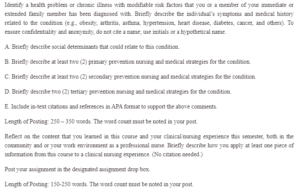Adult and Paediatric Obesity
Obesity is a scourge that only seems to get worse in the US and the world. Lakerveld and Mackenbach (2017) note that the increasing obesity prevalence creates a significant burden on the healthcare system, the economy, and the patient. The disease complications that arise from obesity further compound the disease burden on society. Obesity is caused by an imbalance between the number of calories a person consumes and the calories a person spends. Next to high-energy food overconsumption and a lack of sufficient physical activity, there is evidence that high levels of stress, insufficient amounts of sleep, and a sedentary life contribute to excessive weight gain and obesity (Lakerveld & Mackenbach, 2017). The most common and constant contributor to obesity is socioeconomic status (Kuntz & Lampert, 2010). In both developing and developed countries, persons with lower socioeconomic groups tend to have higher incidences of obesity among their populace. This may be explained by a lack of amenities encouraging physical activities, such as a safe park for walks, a YMCA, or high-end gyms. Additionally, those with lower socioeconomic status often lack the means, money, social support, and knowledge (Chritakkis & Fowler, 2007).
Obesity prevention begins at a young age. Primary prevention strategies for adults and children include encouraging patients to limit intake of sugary foods, limiting screen time for children and sedentary lifestyles for adults, incorporating physical activity, getting at least 8 hours of sleep, hydrating on water, and cutting out sugared drinks. For secondary prevention, adults and children need regular weight and BMI checks, such as blood glucose and cholesterol level checks and blood pressure checks. Tertiary prevention strategies include joining a Weight Watchers group where members encourage each other to lose weight, and persons who are morbidly obese can have a gastric bypass operation.
(309 words)
Part Two
One of the course objectives was to ‘recognize opportunities to apply principles of leadership and management in the practice of professional nursing.’ In this regard, I started to focus on my job as an opportunity to bring change rather than a place where I care for patients only. As I learned, a holistic approach to patient care has many benefits, including reducing readmission rates, symptom manifestation in patients, and a general reduction in care costs. I started on a small-scale level where for every patient that I cared for, I would call in the next day to find out how the patient was progressing. When outpatients are followed up, they tend not to return to the hospital because they feel that their care and subsequent follow-up is reason to have confidence in their recovery. When I call up a patient the next day or two, the patient will want to put effort into their healing because they see that I am concerned about their health. This has helped in reducing repeat visits to the healthcare center unless it is for unavoidable reasons. The patient congestion that we had initially has slowly begun to decline, and this has reduced the risk of HAI, including the risk of COVID-19 infection. I intend to perfect this patient-centered care skill and hopefully have it implemented in the department where I work.
(236 words)
References
Christakis, N. A., & Fowler, J. H. (2007). The spread of obesity in an extensive social network over 32 years. New England journal of medicine, 357(4), 370-379.
Kuntz, B., & Lampert, T. (2010). Socioeconomic factors and obesity. Deutsches Ärzteblatt International, 107(30), 517.
Lakerveld, J., & Mackenbach, J. (2017). The Upstream Determinants of Adult Obesity. Obesity Facts, 10(3), 216–222. https://doi.org/10.1159/000471489
ORDER A PLAGIARISM-FREE PAPER HERE
We’ll write everything from scratch
Question
Identify a health problem or chronic illness with modifiable risk factors that you or a member of your immediate or extended family member has been diagnosed with. Briefly describe the individual’s symptoms and medical history related to the condition (e.g., obesity, arthritis, asthma, hypertension, heart disease, diabetes, cancer, and others). To ensure confidentiality and anonymity, do not cite a name; use initials or a hypothetical character.

Adult and Paediatric Obesity
A. Briefly describe social determinants that could relate to this condition.
B. Briefly describe at least two (2) primary prevention nursing and medical strategies for the condition.
C. Briefly describe at least two (2) secondary prevention nursing and medical strategies for the condition.
D. Briefly describe two (2) tertiary prevention nursing and medical strategies for the condition.
E. Include in-text citations and references in APA format to support the above comments.
Length of Posting: 250 – 350 words. The word count must be noted in your post.
Reflect on the content you learned in this course and your clinical/nursing experience this semester, both in the community and your work environment as a professional nurse. Briefly describe how you apply at least one piece of information from this course to a clinical nursing experience. (No citation needed.)
Post your assignment in the designated assignment drop box.
Length of Posting: 150-250 words. The word count must be noted in your post.

